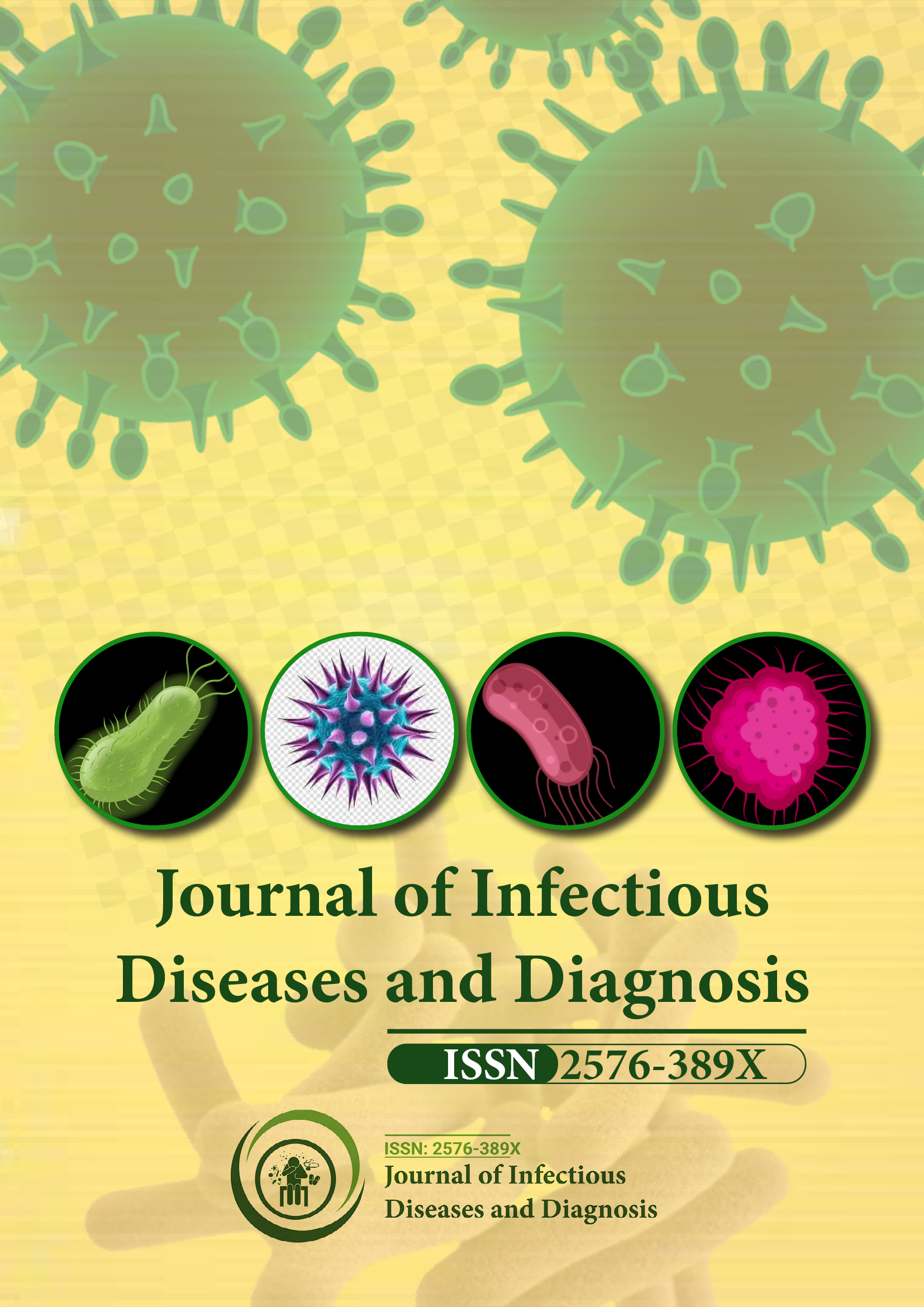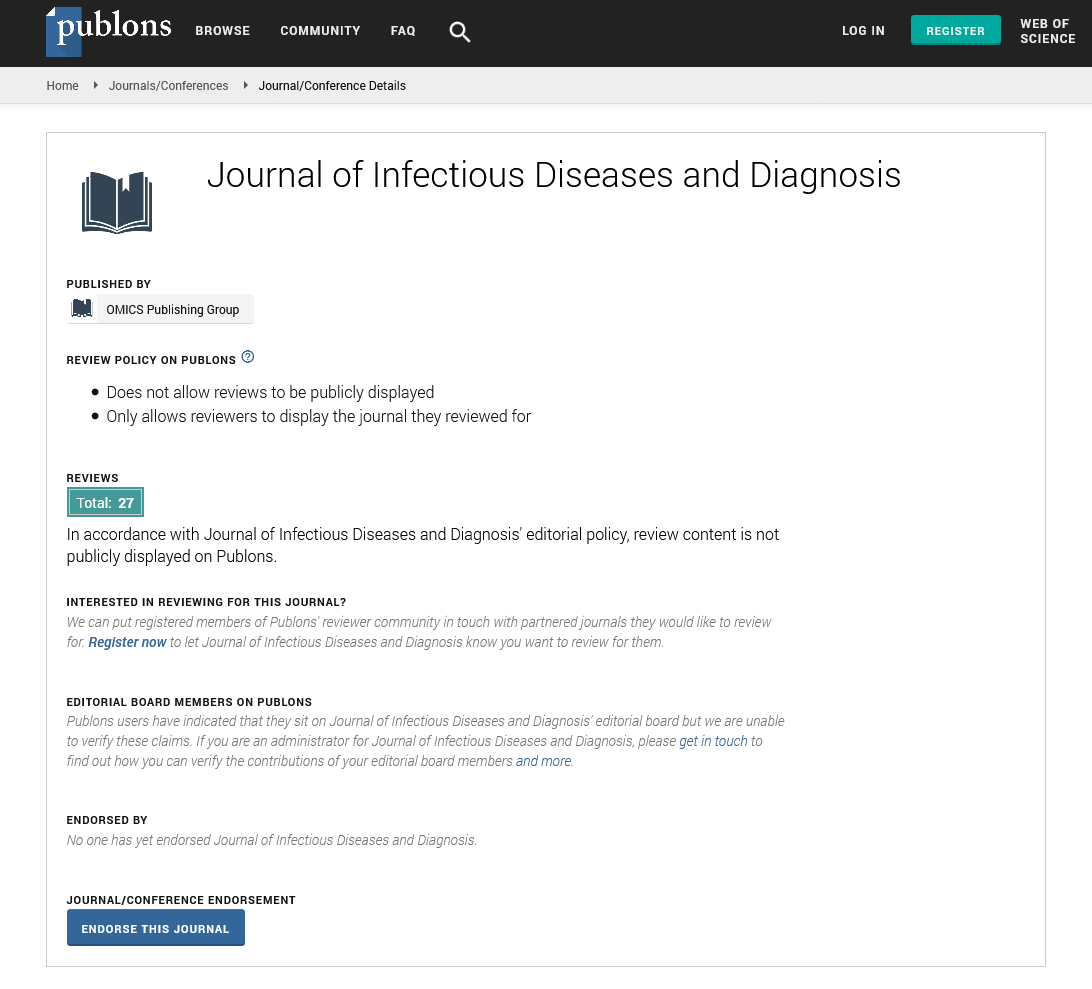Indexed In
- RefSeek
- Hamdard University
- EBSCO A-Z
- Publons
- Euro Pub
- Google Scholar
Useful Links
Share This Page
Journal Flyer

Open Access Journals
- Agri and Aquaculture
- Biochemistry
- Bioinformatics & Systems Biology
- Business & Management
- Chemistry
- Clinical Sciences
- Engineering
- Food & Nutrition
- General Science
- Genetics & Molecular Biology
- Immunology & Microbiology
- Medical Sciences
- Neuroscience & Psychology
- Nursing & Health Care
- Pharmaceutical Sciences
Commentary - (2025) Volume 10, Issue 2
Monkeypox Virus: Clinical Patterns, Public Health Implications and Control Measures
Nelson Richard*Received: 25-Feb-2025, Manuscript No. JIDD-25-28666; Editor assigned: 27-Feb-2025, Pre QC No. JIDD-25-28666 (PQ); Reviewed: 14-Mar-2025, QC No. JIDD-25-28666; Revised: 21-Mar-2025, Manuscript No. JIDD-25-28666 (R); Published: 28-Mar-2025, DOI: 10.35248/2576-389X.25.10.320
Description
Monkeypox is an emerging zoonotic disease caused by the monkeypox virus, a member of the Orthopoxvirus genus in the Poxviridae family. Although historically confined to remote parts of Central and West Africa, recent outbreaks have drawn global attention due to its spread beyond endemic regions. First identified in laboratory monkeys in 1958 and later in humans in 1970, the disease shares similarities with smallpox, though generally less severe.
Etiology and transmission
Monkeypox virus is a double-stranded DNA virus with two recognized clades: The Central African (Congo Basin) clade, associated with higher transmission and mortality and the West African clade, typically causing milder disease. The natural reservoir remains uncertain, but rodents, particularly squirrels and rats, are suspected as the primary hosts.
Non-human primates may serve as incidental hosts rather than reservoirs. Human infection can result from direct contact with infected animals through bites, scratches, or handling of wild game. Secondary transmission occurs via close contact with infected individuals, contaminated materials such as bedding or clothing, or respiratory droplets during prolonged face-to-face interactions. The virus can also spread through skin lesions, body fluids, or mucosal surfaces.
Recent outbreaks have highlighted the potential for person-toperson transmission in densely populated areas and within specific social networks. Unlike earlier outbreaks, newer clusters have reported transmission associated with intimate contact, indicating the need for broader awareness across diverse populations.
Clinical presentation
The incubation period ranges from 6 to 13 days, although it may extend up to 21 days. The disease typically progresses through several stages:
Prodromal stage: This phase includes fever, headache, lymphadenopathy, muscle aches and fatigue. Lymph node swelling is a distinguishing feature, not commonly seen in similar illnesses such as smallpox or chickenpox.
Eruptive stage: Within a few days of fever onset, a characteristic rash develops, beginning on the face before spreading to the limbs and other parts of the body. Lesions evolve from macules to papules, vesicles, pustules and scabs over two to four weeks.
The disease is generally self-limiting; however, complications such as secondary infections, bronchopneumonia, sepsis and encephalitis can occur, particularly in children, immunocompromised individuals, or pregnant women. Case fatality rates vary by clade and access to healthcare, ranging from 1% to 10%.
Diagnosis
Accurate diagnosis requires laboratory confirmation, as the rash can resemble other dermatological conditions like chickenpox, measles, or bacterial infections. Diagnostic techniques include:
Polymerase Chain Reaction (PCR): Considered the most reliable method, especially when performed on lesion material.
Serological tests: These may detect antibodies but are less specific due to cross-reactivity with other orthopoxviruses.
Virus isolation and electron microscopy: These methods are less commonly used due to biosafety requirements but provide definitive identification in research settings.
Treatment and management
There is no specific treatment approved solely for monkeypox. However, antiviral agents developed for smallpox, such as tecovirimat, have shown efficacy and are used under expanded access protocols. Supportive care, including hydration, pain relief and management of secondary infections, forms the backbone of treatment. Vaccination plays a role in both pre-exposure and post-exposure scenarios. The smallpox vaccine, particularly the newer, non-replicating Modified Vaccinia Ankara (MVA) vaccine, offers cross-protection. Targeted immunization of highrisk groups and contacts helps reduce spread.
Prevention and control
Effective control of monkeypox depends on public awareness, surveillance and rapid response measures. Key strategies include:
• Avoiding contact with wildlife, particularly in regions with known animal reservoirs.
• Implementing isolation protocols for confirmed cases.
• Ensuring appropriate use of Personal Protective Equipment (PPE) in healthcare settings.
• Tracing and monitoring contacts to contain outbreaks.
Community engagement and risk communication are essential for compliance with preventive measures. Efforts should focus on reducing stigma and ensuring that affected individuals receive accurate information and support.
Global implications
The expansion of monkeypox into new geographic areas underscores the interconnectedness of human, animal and environmental health. Factors such as deforestation, climate change and increased wildlife trade contribute to the emergence of zoonotic diseases. Urbanization and global travel facilitate their spread beyond traditional boundaries.
In 2022, the World Health Organization declared monkeypox a public health emergency of international concern, signaling the need for coordinated efforts at local, national and international levels. Research into vaccines, treatments and diagnostics must continue alongside efforts to strengthen health systems and enhance epidemic preparedness.
Conclusion
Monkeypox serves as a reminder of the evolving nature of infectious diseases and the ongoing risks posed by zoonotic pathogens. Its recent resurgence calls for vigilant surveillance, timely intervention and sustained research to better understand its transmission dynamics and long-term implications. Building resilience against such diseases involves not only medical advancements but also attention to socio-environmental factors that influence their emergence and spread.
Citation: Richard N (2025). Monkeypox Virus: Clinical Patterns, Public Health Implications and Control Measures. J Infect Dis Diagn. 10:320.
Copyright: © 2025 Richard N. This is an open-access article distributed under the terms of the Creative Commons Attribution License, which permits unrestricted use, distribution and reproduction in any medium, provided the original author and source are credited.

